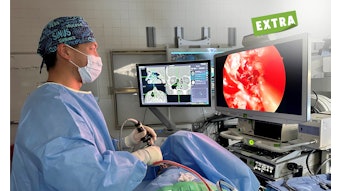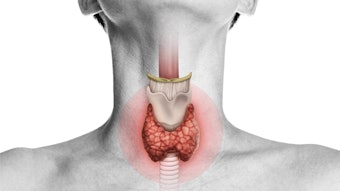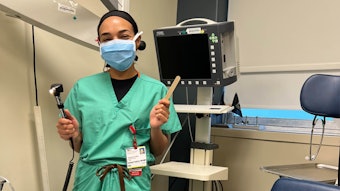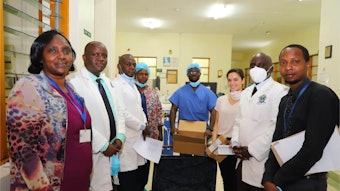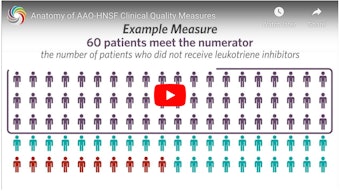Patient Experience: Why It Matters and How to Improve It
A patient’s desire for trust and empathy from their provider remains a key factor in remaining loyal to the provider, practice, and organization.
Agnes M. Hurtuk, MD, Kiran Kakarala, MD, MA, Matthew M. Smith, MD, MPH, and Carol M. Lewis, MD, MPH, Patient Safety and Quality Improvement Committee members
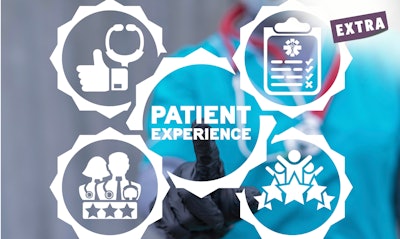
The significant changes in healthcare in the past several years brought on by the COVID-19 pandemic resulted in changes in patients’ perceptions, values, and preferences in healthcare. During the early phases of the pandemic, nearly every healthcare stakeholder stepped up in meeting the needs of patients and communities, from creating mass vaccination sites to growing the use of telehealth and other digital healthcare technologies, which led to increased patient comfort with and preference for digital engagement. Surveys show that about 34% of patients considered themselves digitally inclined at the end of 2021, up from 17% in 2019.2 At the Loyola University Medical Center otolaryngology practice, about 70% of the patients are active on the MyChart patient portal, a total of 25% of the otolaryngology clinic appointments are self-scheduled by patients via the patient portal, and about 33% of the ENT patients use the appointment self-check-in feature on the patient portal; these rates continue to increase. Patients also increasingly prefer email, text, or online portal communication with their physician office versus telephone calls. On average, the number of patient portal messages to the providers increased by about 150%, when compared with pre-pandemic times. These trends are related to patients prioritizing convenience, personalization, transparency, and quality in their healthcare choices. Patients are also seeking the site of service conveniences such as clinic accessibility, parking availability, cleanliness, friendliness of staff, fast check-in processes. Many otolaryngology practices offer convenient on-site ancillary services ranging from allergy testing, in-office procedures, and CT scans to audiology services and on-site dispensing of over-the-counter hearing aids to meet patients’ needs. Despite the pandemic forcing drastic changes in healthcare and changing the way we communicate and interact with patients, the patient’s desire for trust and empathy from their provider remains an important factor in remaining loyal to the provider, practice, and organization.
Within a healthcare system, patient-centered resources may include services such as patient advocacy and education, food services, language assistance, chaplaincy, and housekeeping. Patient family advisory programs are becoming more prevalent, and patient advisors may serve on institutional committees, recruitment panels, or wherever patient input can enrich the discussion or outcomes. In addition, since the importance of relationship-centered communication in both patient and provider experience is becoming widely recognized, patient experience improvement initiatives will eventually include courses on provider communication skills. There are several national communication skills programs dedicated to equipping providers with the skills needed to engage patients more efficiently, which translates into more meaningful patient connections, a metric frequently assessed in patient experience surveys. Outcomes from one such program demonstrated not only an improvement in patient satisfaction scores, but also a decrease in provider burnout.3
Understanding and acting upon patient experience survey data can at first glance seem bewildering and burdensome; however, the investment is well worth the return in identifying opportunities to improve patient experience. The first step is to decipher the scores and accompanying statistical analysis of performance. Press Ganey’s Medical Practice Survey is one of the most frequently used outpatient patient experience surveys. It consists of 24 questions and asks patients to rate their experience from very poor (0) to very good (100). Survey sections include access, moving through the visit, nurse assistant, and provider. Press Ganey provides a scorecard for individual providers with percentile ranks for each question, comparing institution and provider performance against a curated peer group (e.g., an academic medical center would be compared with other academic medical centers of similar size). When interpreting survey data and performance, it is important to note that small drops in scores may translate to large drops in percentile rank, especially when overall performance in a peer group is good. Additionally, these drops in scores and ranking are often influenced by a small number of negative surveys. Therefore, looking at these rankings over a longer term (e.g., year to year rather than month to month) and collecting as many surveys as possible would be helpful to avoid misinterpreting trends. Some practices are making efforts to increase the patient experience survey responses by providing a QR code with the patient after-visit summary, which patients can use to access the survey, or sending survey reminders via email or text message. While there are many factors that affect patient experience, internal performance analysis at the University of Kansas Health System noted that the major drivers of overall patient satisfaction were provider communication and listening skills. As noted earlier, interventions to improve communication with patients can have significant benefits to both patients and providers.
While many of the variables impacting patient satisfaction data might seem out of provider control, evaluating the healthcare delivery system as seen through the patient’s perception is paramount to improving the patient experience and providing excellent care. At Cincinnati Children’s Hospital Center, pediatric airway unit patient experience scores were noticed to be lower regarding provider communication and poor team environment. Based on these patient experience data, a quality improvement project was conducted with the goal of improving care delivery and communication on the airway unit. It was noted that clinical team members participating in afternoon rounds were disconnected and not coordinated. Key drivers identified were anticipatory preparation, interdisciplinary communication, family communication, and the identification of value-added time. The unit developed a standardized rounding process using a quality improvement methodology (Plan-Do-Study-Act cycles) and found that participation of all stakeholders (physician, nurse, patient, patient’s family) increased from 17% to 89% in three months. Interventions included setting expectations of who is involved on rounds, providing a standard time that rounds would occur, and implementing standardized content discussed on rounds. This simple design improved the communication among team members, increased patient satisfaction scores by 18%, and increased the efficiency of afternoon pediatric airway unit rounds.
Patient experience is the culmination of numerous factors affecting patients as they move through the healthcare system. Many institutions have formal programs serving to improve these variables, including provider communication curriculum, patient access and convenience of services, patient advocacy, and services such as patient education, food and nutrition services, language assistance, chaplaincy, and housekeeping. As providers, reviewing the patient survey data and patient comments may not only provide insight into your daily practice as seen through your patients’ eyes, but these data can also be used to prioritize improvement projects, enhance both patient and provider experiences, and ultimately result in improved patient outcomes.
References:
- The Beryl Institute. https://www.theberylinstitute.org/page/DefiningPatientExp. Accessed February 2, 2023.
- Healthcare Consumer Market Report. Huron Consulting Group. https://www.huronconsultinggroup.com/insights/healthcare-consumer-market-report. Accessed January 29, 2023.
- Boissy A, Windover AK, Bokar D, et al. Communication skills training for physicians improves patient satisfaction. J Gen Intern Med. 31(7):755-761, 2016.
